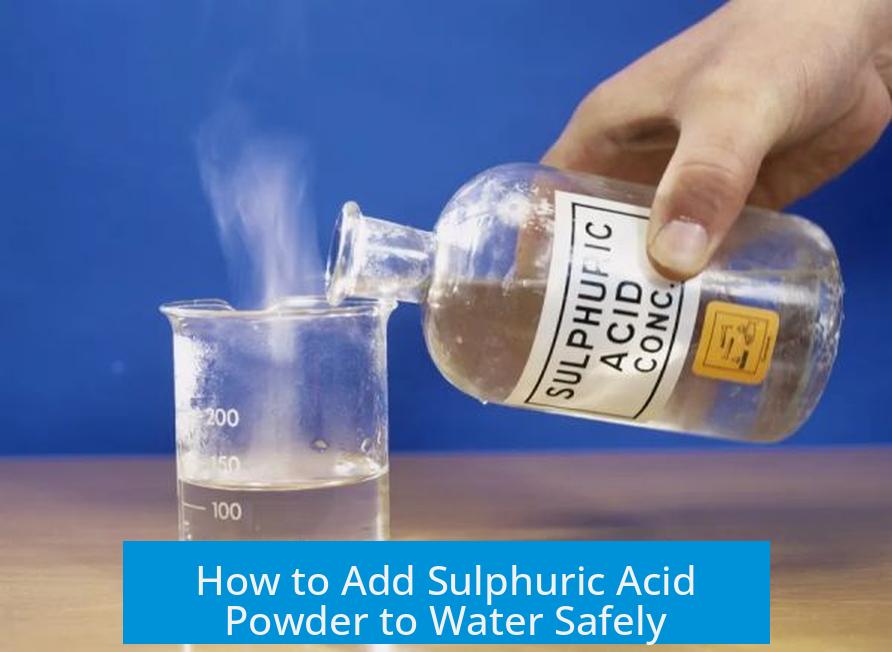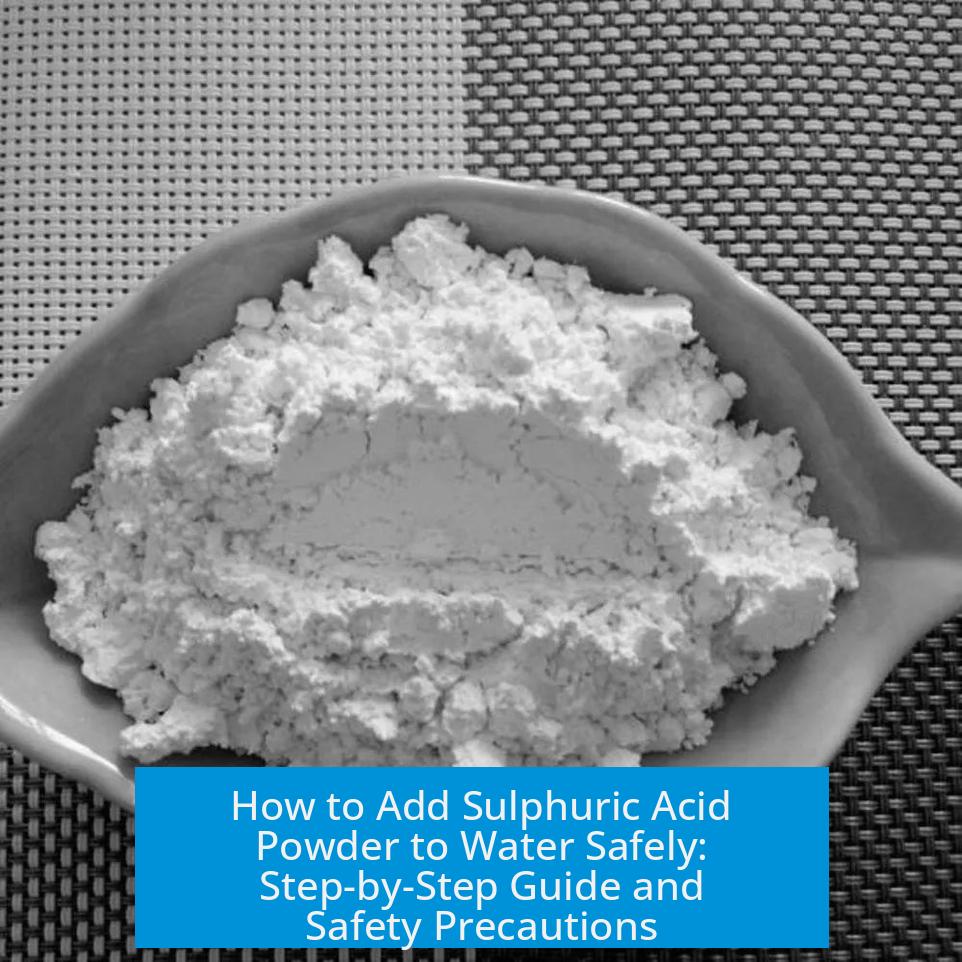How to Add Sulphuric Acid Powder to Water Safely

Sulphuric acid does not exist in powder form; what is often called powdered sulphuric acid is usually sodium bisulfate or sulfamic acid. When handling these powdered acids, safety protocols are essential to avoid injury and chemical hazards.
Identification of the Substance
Sulphuric acid is a liquid at room temperature and does not come as a powder. Therefore, when you encounter a “powdered sulphuric acid,” it is almost certainly sodium bisulfate or sulfamic acid.
Essential Safety Precautions
- Personal Protective Equipment (PPE): Always wear gloves, safety goggles, and a lab coat when handling powdered acid compounds.
- Ventilation: Use a fume hood or work in a well-ventilated area to avoid inhaling powder particles or fumes.
- Prevent Inhalation and Contact: Do not breathe in the powder as it can irritate the respiratory system and skin.
Procedure for Adding Powdered Acid to Water
- Start by pouring the required amount of water into a suitable container. Use slightly less water than the final volume you need since the powder will increase volume.
- Smoothly and slowly add the powder to water to prevent splashing and minimize heat buildup.
- Continuously stir the mixture throughout to ensure even dissolution and control temperature changes.
- Monitor the solution’s temperature carefully. Exothermic reactions may occur, especially with strong acids.
Additional Considerations
- Material Compatibility: Some gemstones like calcites, turquoise, selenites, and emeralds may be damaged by acid contact or water exposure. Exercise caution when handling solutions near these materials.
- Usage: Sodium bisulfate is commonly used in pools and is highly soluble, making it easier to manage in solution form.
Key Takeaways
- Sulphuric acid is not available as a powder; powders labeled as such are salts like sodium bisulfate.
- Use PPE and work in a ventilated space or fume hood to reduce exposure risks.
- Always add the powder slowly to water, never water to powder, to avoid splashing and heat hazards.
- Stir continuously and monitor temperature during dilution.
- Be aware of chemical compatibility with materials such as gemstones.
What is the correct substance when people refer to “sulfuric acid powder”?
There is no actual sulfuric acid in powder form. What is called “sulfuric acid powder” is usually sodium bisulfate or sulfamic acid, which are solid acid salts.
How should I add powdered acid like sodium bisulfate to water safely?
Always add the powder slowly to water, never the other way around. Stir continuously to avoid splashes and monitor temperature changes.
What protective gear do I need when handling powdered acid compounds?
Wear gloves, safety goggles, and a lab coat. Use a fume hood or work in a well-ventilated area to avoid inhaling powder or fumes.
Why is the order of adding powder to water important?
Adding powder slowly to water prevents splashing and reduces risk of skin burns or chemical reactions that produce heat suddenly.
Can the acid powder affect materials besides water?
Yes. Acid can damage some gemstones like calcite or turquoise. Some stones even degrade in water alone, so handle with care.




Leave a Comment